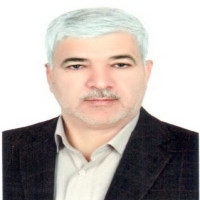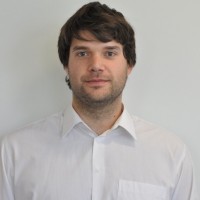Research Article
Issue Editorial Board
Aim & Scope
The International Journal of Aviation Science and Technology is an interdisciplinary journal that focuses mainly on the theme of aviation and sustainability, addressing a broad audience. The aim of this journal is to bring together compilation, research, discussion and criticism studies that link sustainability and aviation issues and to create national knowledge.
This journal accepts publications in aviation science, aircraft engineering, mechanical engineering, energy engineering, electrical-electronic engineering, material engineering, environmental engineering, industrial engineering, architecture, and many other applied sciences. In addition, other studies addressing issues related to aviation will be welcomed.
Author Guidelines
ARTICLE PREPARATION
Please use this Journal template:
https://dergipark.org.tr/tr/download/journal-file/17171
Please use Copyright agreement: (Download and then upload this file)
https://dergipark.org.tr/tr/download/journal-file/17356
Article Types
The International Journal of Aviation Science and Technology Assess:
Full text article (5000-7000 words): Full-text articles are original, high-quality, scientific findings that reveal scientific findings.
Review (7000-9000 words): Reviews are taken with the invitation of the editor. A review article should reveal the point reached in the subject, or bring together the studies carried out to the present day to provide clarity. Those who wish to submit a review to our journal shall submit their CV and previous expertises on the subject.
Article Structure
Full-text articles should include; abstract, introduction, method, conclusion and evaluation. The abstract should not exceed 300 words and should not contain abbreviations.In the abstract section font type should be Times New Roman, font size 10 and line spacing should be 1. Experimental studies shall contain; experimental error analysis, used experimental equipment, calibration techniques. In studies involving computational models, issues such as error analysis and verification of the model should be included.
Symbols, Abbreviations and Units
Avoid using abbreviations and symbols in the abstract section and title of the articles. If abbreviations are used in the text, the explanation should be given in the first place of the abbreviation. The abbreviations to be used in the articles should be an internationally accepted standard abbreviation. Units should be used in accordance with international unit system (SI Unit System).
Mathematical Formulas and Equations
Mathematical formulas or equations to be included in the articles should be prepared with MS Word plugins as editable. It will be requested to authors to correct mathematical formulas or equations added as images. Mathematical formulas or equations should be aligned to left. There should be an empty line between the equations and other content. Also mathematical formulas or equations
should be numbered using Latin numerals.
Use of Visual Materials
Photographs, graphics, etc. will be included in the articles. visual materials should be legible, at least 300 DPI resolution and clear. Preferred visual file formats are; .jpeg, .jpg, .png and .tiff. Images should be prepared to fit single column in double column page layout. Images that do not fit into a single column in a double-column layout should be placed close to where they were first referred to in a single-column layout. There should be no overflow to the margins in the placement of the images. It is recommended to use one of the Arial, Helvetica and Times New Roman scripts if the visuals contain text. Images should be numbered using Latin numerals without line spacing below the image as “Figure 1: Figure description”. References should be made according to the journal reference method.
Tables
The tables in your article should be in editable format. Please avoid using images, photos or screenshots as tables. Tables should be prepared to fit single column in double column page layout.
Tables that do not fit into a single column in a double-column layout should be placed close to the page where they were first mentioned in a single-column layout. There should be no overflow to the margins in the layout of the tables. Times New Roman and 10 font size should be used as the writing character of the tables. Table row spacing must be 1 row, before and after spaces must be 0. Tables should be numbered using Latin numerals without a line spacing above the table as “Table 1: Table description”. References for the tables should be based on the journal reference method.
References
References should be cited in the article as (Kiyak et al., 2008). The index of references should be arranged alphabetically according to the surname of the first author. The International Journal of Aviation Science and Technology uses the APA in its citation.
First Presentation Style
You should use MS Word word syntax while preparing your article. Please prepare your article according to following:
2.5 cm of space should be left on the right, left, bottom and top of the page and two columns should be used.
Text should be justified and line spacing must be 1 line, before and after spaces must be 0.
Font style must be Times New Roman and font size must be 10.
The page number should be centered at the bottom of each page.
Titles should be numbered using Latin numerals.
- The first level titles should be written in bold capital letters. The second level titles should be bold and capitalized on the first letters. In the third level titles, only the first letter of the first word should be capitalized.
- Tables are
given in Latin numerals where they are first mentioned in the text.
Table headings must be above the table.
- Figures are
given in Latin numerals where they are first mentioned in the text.
Figure captions should be under the figure.
-
In the first presentation, the following sections should be included:
English title of the article
Abstract of the article in English
English keywords (minimum three, maximum five)
Main text (Introduction, Method, Conclusion and Evaluation sections, etc.)
References
Author information should not be included in the first presentation.
Ethical Principles and Publication Policy
Price Policy
All articles published in IJAST Journal are open access and freely available online, immediately upon publication. Authors may read about publication charges policies by the following link.
https://ijast.org/publication-charge-policy/
Indexes
Citation Indexes
Journal Boards
Editor-in-Chief

Co-Editors

Section Editors








Editorial Board





Language Editor
Editorial Office

Please find the article preperation and structure guides in author guidelines section.
Please do not hasitate to contact with us in here.




